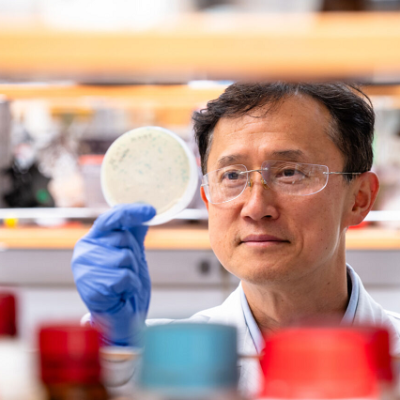Agricultural pressures on the environment, such as land conversion and agrochemical application, are expected to increase 50 to 90 percent by 2050 in a “business as usual” scenario. Conventional agrochemicals, like pesticides and fertilizers, already negatively impact water quality, biodiversity, and human health. Increasing their use will only exacerbate these problems. Despite their adverse impacts, pesticides and fertilizers also play an important role in the modern food system by boosting yields and keeping pests at bay. This tension provides a unique opportunity to develop innovations that minimize the environmental impacts and maximize the performance of agrochemicals.
In a paper recently published in Nature Nanotechnology, Leanne Gilbertson and her colleagues explore the potential of engineered nanomaterials (ENMs) for use in seed coatings, leaf treatments, and soil amendments as more sustainable alternatives to conventional agrochemical applications. ENMs are extremely small, man-made chemical substances or materials that can be easily manipulated and used for a wide variety of purposes. They have been used in water treatment, photovoltaic cells, drug delivery, and more. Now scientists are evaluating their potential in an agricultural context. While agrochemical ENMs may be able to promote plant growth and reduce nutrient inputs, they may be more costly and energy-intensive than conventional agrochemicals. Gilbertson’s study aimed to identify the most promising ways in which ENMs can advance agricultural sustainability.
In their analysis, the researchers took data from existing studies to compare the performance and environmental impacts of ENMs to their conventional counterparts. Specifically, they looked at cumulative energy demand (CED) as a metric for environmental impact. This metric allowed them to consider the environmental impacts of ENMs and conventional alternatives over their entire life cycle. Performance was measured as the ability to enhance crop yields and germination rates.
ENMs in the form of seed coatings and leaf sprays generally had both higher performance and lower or equivalent environmental impacts compared to conventional coatings and sprays. Of the ENMs studied, zinc and copper seed coatings had the lowest environmental impacts and highest germination rates. Zinc and copper are essential plant micronutrients and using them as ENM seed coatings ensures they are efficiently delivered at the early stages of crop growth. Carbon nanotube coatings also resulted in high germination rates, likely due to their ability to facilitate water uptake during germination. For increasing yields, ENM leaf sprays were thought to be particularly successful because they can easily penetrate leaves due to their small size.
In contrast, the analysis of ENM soil amendments showed a more complex picture. ENM soil amendments are not yet more sustainable than conventional soil amendments because they are energy-intensive to produce. However, the authors note that the analysis did not account for benefits—such as nutrient runoff reduction—that may result from replacing conventional soil amendments with ENM amendments.
This research is an important preliminary analysis to inform future ENM design in agriculture. Importantly, the authors acknowledge the need for additional research on human health and ecosystem impacts before ENMs can be widely adopted. Furthermore, the use of ENMs on food products offers unique regulatory challenges. Despite these unknowns, this analysis is an example of the type of proactive research that is critical to building an agricultural system that minimizes impacts on the environment and meets the nutritional demands of a growing population.
Read the original article on Yale University.







